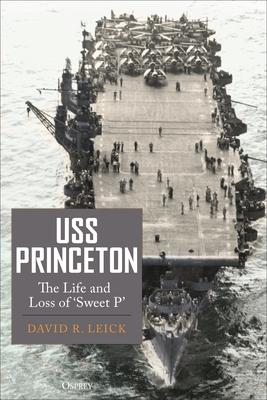An in-depth history of the US Navy's light aircraft carrier the USS Princeton and its operational exploits in the Pacific Theater of World War II.
This new history of the life and loss of the USS Princeton tells the story of one of the new class of aircraft carrier that proved essential to the US Navy's victory over the Imperial Japanese Navy in the Pacific War. Starting life as the light cruiser Tallahassee before being converted to a light carrier as part of the plan to ramp up the strength of US naval air power, USS Princeton (CVL-23) joined the Pacific fleet in August 1943 and was immediately put to work as the United States was assembling new ships and crews for the Central Pacific campaign where the ship played a key role in conducting multiple strikes against the Japanese bastion at Rabaul. Princeton then joined Task Force 58, the Fast Carrier Task Force, and took part in the invasion of the Philippines, where the ship was lost. David R. Leick uses first-hand accounts from archives such as the Naval History and Heritage Command to examine the campaigns, aircraft, tactics, command decisions, and life aboard ship during the American Pacific campaign against Japan from early 1943 until Princeton's tragic demise in October 1944. The book focusses closely on the crew and airmen of the Princeton, as well as describing in detail the toll that prolonged combat operations took on the frontline sailor.
An in-depth history of the US Navy's light aircraft carrier the USS Princeton and its operational exploits in the Pacific Theater of World War II.
This new history of the life and loss of the USS Princeton tells the story of one of the new class of aircraft carrier that proved essential to the US Navy's victory over the Imperial Japanese Navy in the Pacific War. Starting life as the light cruiser Tallahassee before being converted to a light carrier as part of the plan to ramp up the strength of US naval air power, USS Princeton (CVL-23) joined the Pacific fleet in August 1943 and was immediately put to work as the United States was assembling new ships and crews for the Central Pacific campaign where the ship played a key role in conducting multiple strikes against the Japanese bastion at Rabaul. Princeton then joined Task Force 58, the Fast Carrier Task Force, and took part in the invasion of the Philippines, where the ship was lost. David R. Leick uses first-hand accounts from archives such as the Naval History and Heritage Command to examine the campaigns, aircraft, tactics, command decisions, and life aboard ship during the American Pacific campaign against Japan from early 1943 until Princeton's tragic demise in October 1944. The book focusses closely on the crew and airmen of the Princeton, as well as describing in detail the toll that prolonged combat operations took on the frontline sailor.Hardcover
$35.00